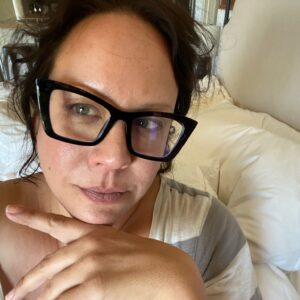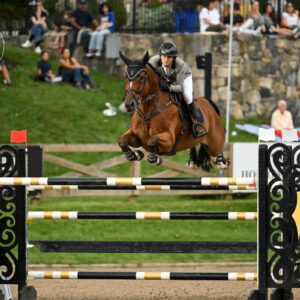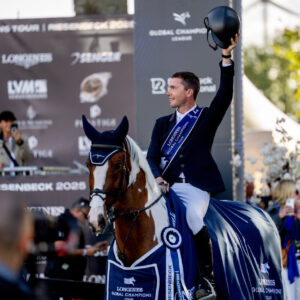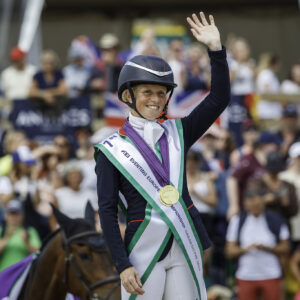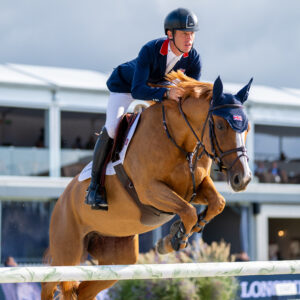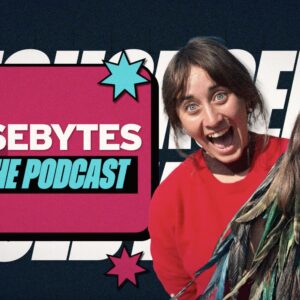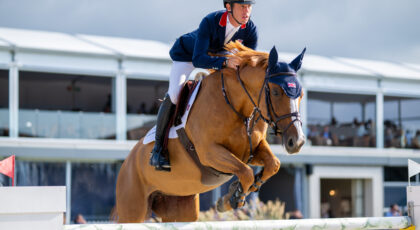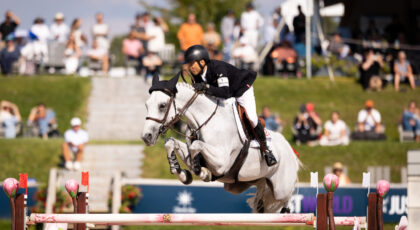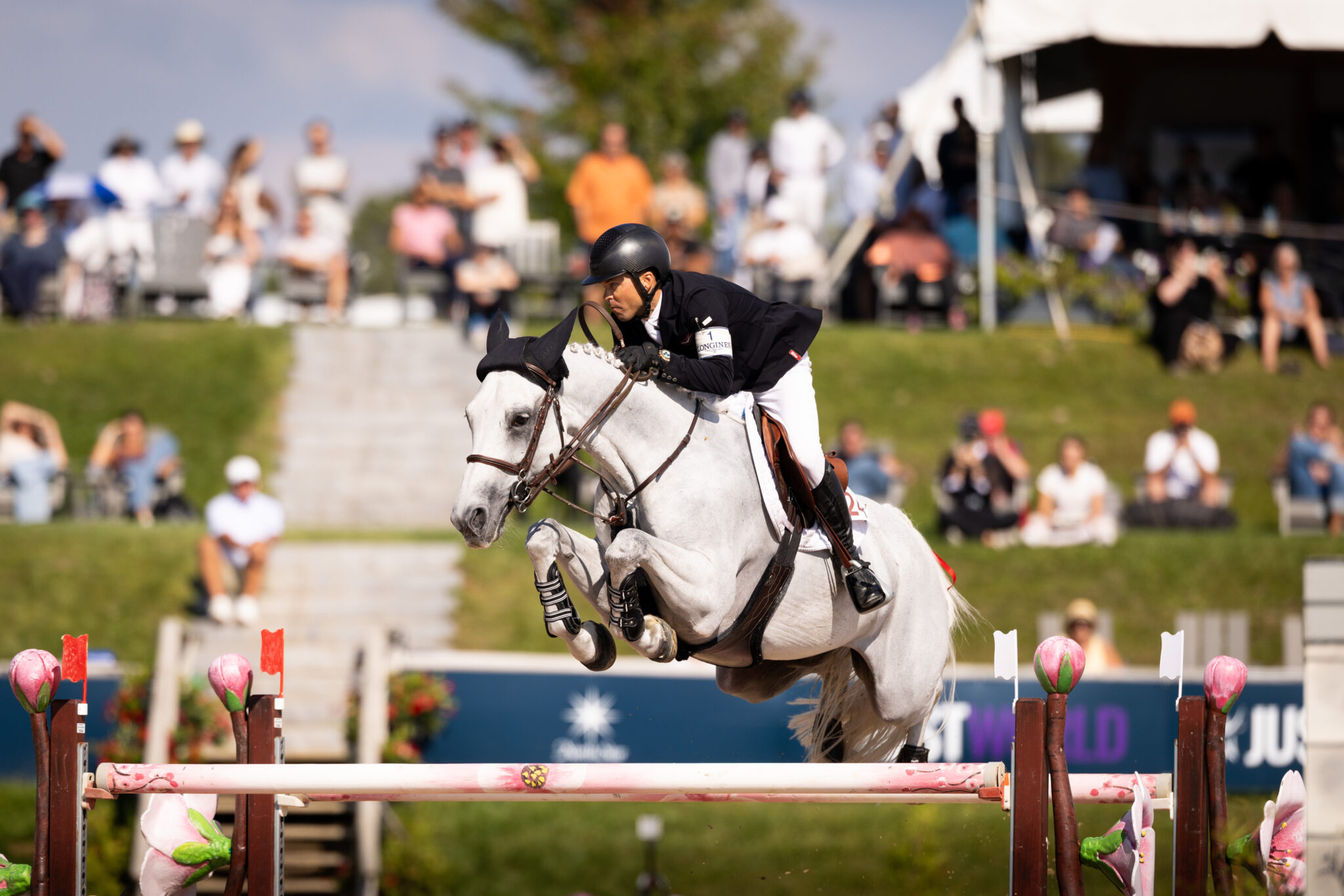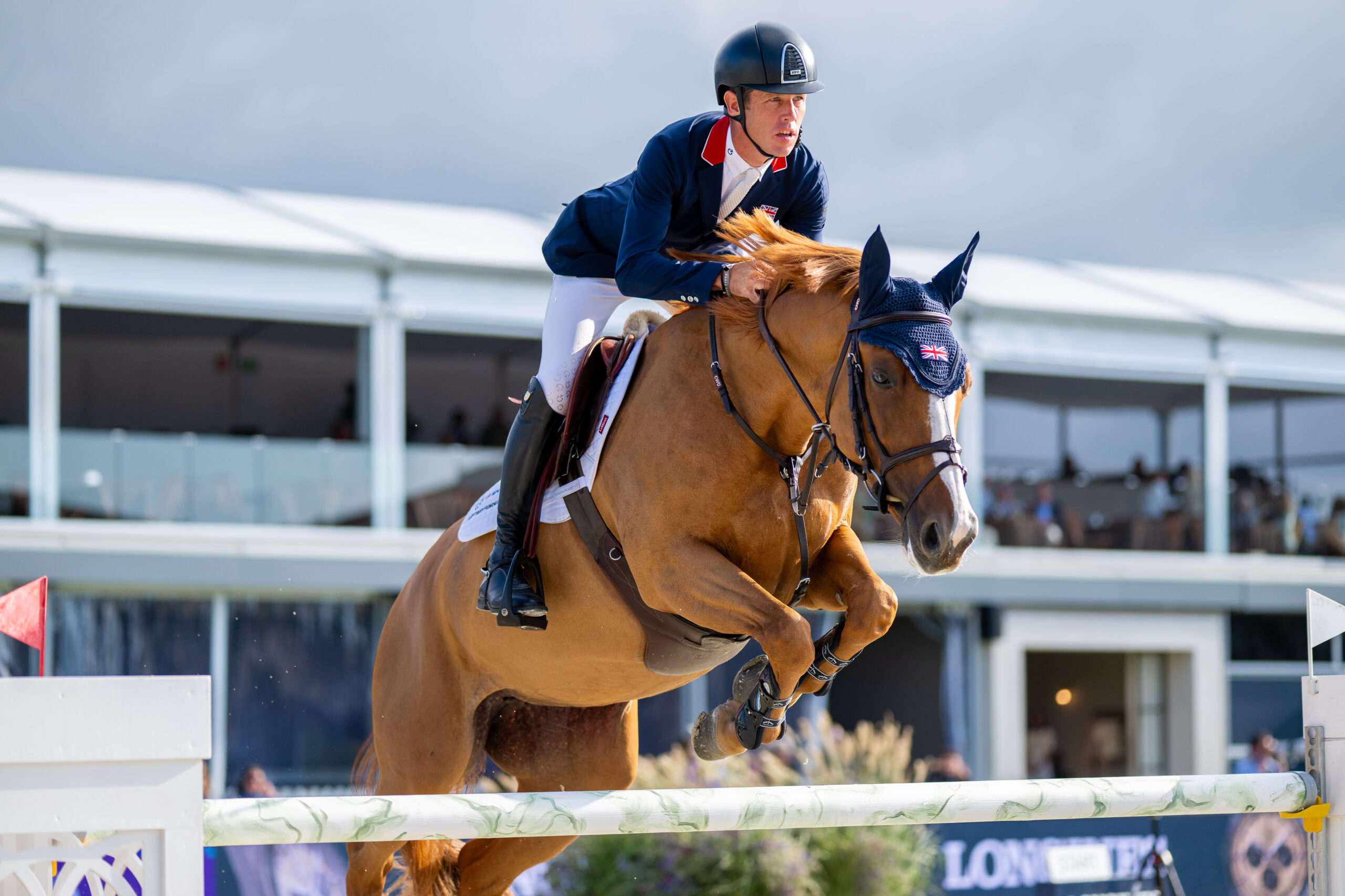If you were glued to equestrian during the Paris Olympic Games, you likely witnessed some of my favorite moments unfolding across the disciplines.
Harry Charles helping Great Britain win team gold only weeks after fracturing his arm. Boyd Martin and Fedarman B carrying on the legacy of the late Annie Goodwin. And Snoop Dogg meeting the legendary Suppenkasper, better known to the world as “Rave Horse.”
Amidst the storylines and displays of top sport that captivated audiences new and old, a growing cohort of over 40,000 people petitioned for equestrian’s removal from the Games. That number, fueled by recent horse welfare controversies, comprises equestrians and the general public, alike.
“The atmosphere of international competition always drives people to push themselves to often unhealthy lengths for the sake of a medal,” one petitioner said. “A horse has no say in their own participation for such a competition, and therefore, they cannot consent to the treatment they are given in the name of Olympic success.”
As someone who is in favor of equestrian’s Olympic status, this comment struck me the most and provided a significant opportunity for reflection. You could rightfully debate its nuances and whether the cases of misconduct, combined with the potential for future incidents, warrant the sport’s removal.
No matter where you stand on the issue, it comes with the territory of working with animals: people will, and should, scrutinize their treatment. What makes the petitions and viral headlines tough pills to swallow is knowing that there is more value to the human-horse connection than the narratives perpetuated in the mainstream. Narratives that often reduce equestrian sport to animal abuse, elitism, and scandal.
On the ramp-up to the Olympics’ stateside return, there is no better time to lift the veil on our Olympic disciplines and bring the sport’s bigger picture into focus.

As it Stands
During the Tokyo and Paris Olympic Games, I made it my mission to scour social media and gauge the public’s perception of equestrian. Having worked with and around horses over the past 14 years—first as a therapeutic riding center volunteer, then as a groom, and more recently, as a sports journalist—I was eager to see the mainstream’s response to the horse and rider relationship.
What surprised me most wasn’t the criticisms our industry received about horse welfare, the sport’s pay-to-play culture, or the legitimacy of riders being athletes. Rather, it was the legions of people who became emotionally invested in the horses and riders they were watching in a positive way.
There was nothing quite like witnessing the rise of ‘Rave Horse’ and the following he amassed with Steffen Peters. For many, they were the highlight of the Tokyo Games, with fans anticipating their Olympic return in Paris. During this year’s cycle, Michael Jung’s horse, Chipmunk FRH, also rallied online support; largely for his distinctive name, but also for his quest for gold after falling short in previous attempts.
On the comical side of things, we can’t forget the new-age jargon that spectators coined for our industry. Bonnets are now called “horse hats.” The half-pass was replaced by “Cripwalking.” And cross country was dubbed a “giant putt-putt course” for horses.
Equestrian won over viewers who knew little to nothing about the sport. It wasn’t the discipline formats and technicalities that left them curious and wanting more, but the awe-inspiring physical feats and horse and rider backstories.
While the Games undoubtedly boosted the sport’s visibility, they left much to uncover about the humans and horses that propel our industry forward.
The Stories We Tell
October marks eight years since Mark Bellissimo wrote an opinion piece on elevating equestrian sport to its full potential. In How Can We Build U.S. Horse Sport So That Fans And Sponsors Will Come?, he emphasized tapping into existent horse lovers, promoting horse and rider personalities, and upholding equine welfare standards.
“There needs to be more productive collaboration between the top riders, event organizers and the governing bodies to create rider and horse ‘personalities’ in the sport and a more engaging and marketable product that attracts media, spectators, and sponsorship,” he said.
“Without personalities and interest in the sport, there is no media; if there is no media, there are no spectators, and if there are no spectators, there is no sponsorship, and if there is no sponsorship, there is no money to promote commercial sport.”
I agree that there is no evolving the sport and its narratives without first giving audiences something to connect with and believe in. What that product is remains subjective, as we each experience the sport differently, and have varying visions for progress.
I view the sport through the lens of someone whose involvement extends far beyond the saddle. While I faithfully attend grands prix in Wellington and stay current on industry developments, I rarely ride anymore and have zero desire to participate at the highest level.
Having navigated this industry from multiple perspectives, I understand the sport’s appeal and ability to attract people of all demographics and interest levels. The horse is our unifying force, and you need not be a millionaire or the man in the arena to find your place among them.
If it’s our goal to activate the crowds of people who love horses and want to get involved, a starting point would be broadening the narrative around the human-horse connection.
The world hears of the rider in the arena but knows little about equestrians who dedicate their lives to caring for the horses. These include show grooms, and the course designers who navigate technicality and safety with every jump built. They include the veterinarians who prioritize horse welfare above all.
While these unsung heroes may not be in the spotlight, they shape and contribute to our industry in innumerable ways. Their roles are significant in safeguarding horse welfare and illuminating pathways to which others can aspire.
As we journey to Los Angeles, will we commit to telling stories that celebrate and encourage diverse forms of participation? Or will we remain in the confines of a culture that has never been marketed as one “for the people?”

Looking to the Future
While I may not have ready solutions to significant issues such as sport accessibility and horse welfare, I deeply believe in the power of storytelling to inspire meaningful change. With this goal in mind, I created Top Sport: Unbridled, a road-to-the-Olympics docuseries concept that spotlights the humans and horses bringing hard work, community, and sportsmanship into focus.
Throughout the series, viewers will navigate the highs and lows of sport through the eyes of riders who balance ambition with an unwavering commitment to their horses’ well-being. They’ll work alongside the grooms and veterinarians to keep grand prix horses healthy and in peak condition. And they’ll analyze data with the chef d’equipes to select riders and horses for championship teams. Above all, they’ll get to know the horse as a central character and the ultimate teacher.
Contrary to other equestrian shows on the market, Top Sport: Unbridled delves beyond the rider’s perspective to diversify the Olympic dream, and what it means to be an equestrian. The show also examines industry shortcomings and gives viewers the insight needed to answer their biggest questions.
Why is equestrian an Olympic sport, and is it ethical for the horses? Can riders buy their way to the top, and is the sport only for the white and wealthy?
From riders and show grooms to course designers and other key players, the representation on-screen aims to deconstruct the layers of sport and what success looks like in this industry. Hopefully, it will also invite audiences to imagine themselves as a deserving part of this world.
If equestrian can win viewers’ hearts, we’re looking at a more expansive industry in the future. One so heavily embraced by the 99% that the floodgates of change and opportunity force open.
“Top Sport: Unbridled” is looking for executive producers, with the series pitch deck available for review upon request. To share leads and general thoughts, please reach out to hello@tsunbridled.com. To learn more and stay updated on project developments, visit www.tsunbridled.com or follow the project on Instagram at @tsunbridled.


 October 21, 2024
October 21, 2024 





